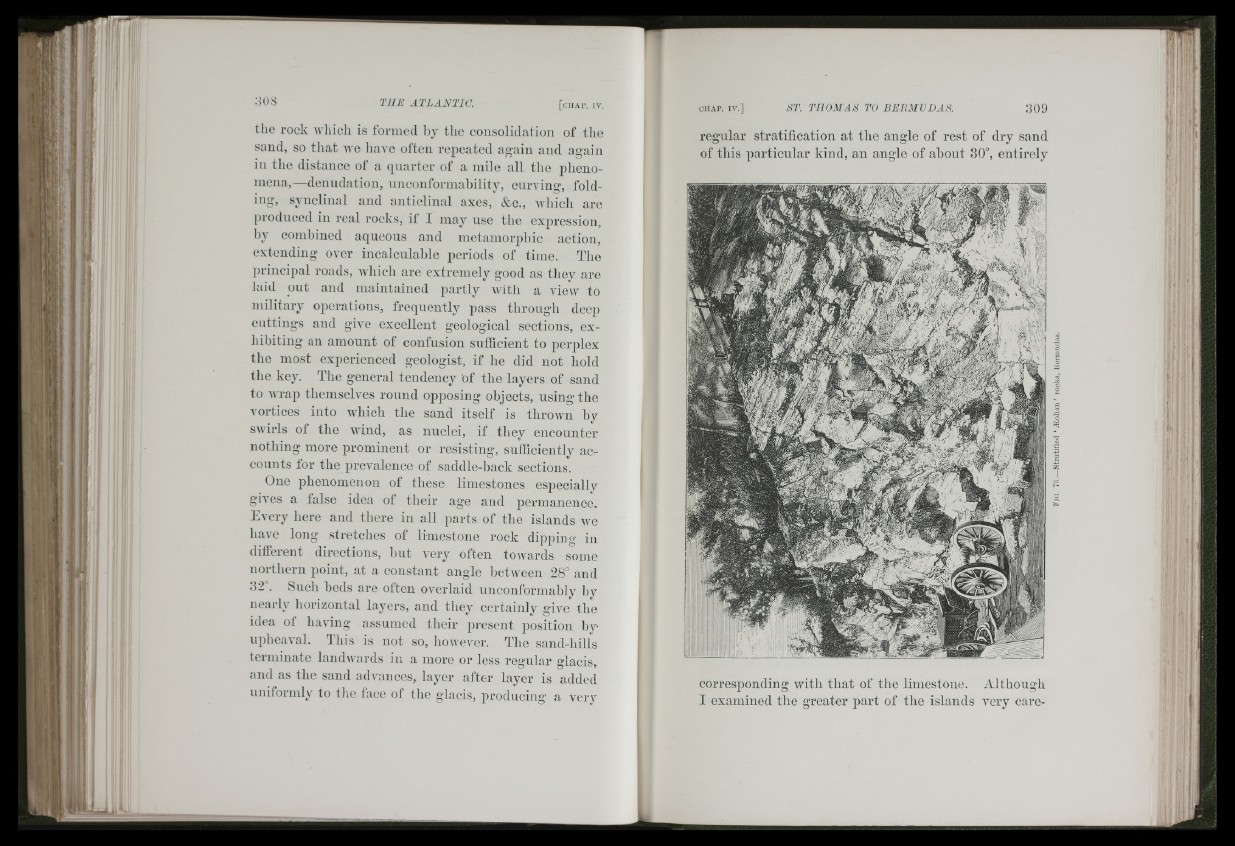
a ■
iJ..' 1 :
'N-': Î
! i
< I
the rock wliicli is formed by tbe consolidation of tbe
sand, so tliat ive liave often repeated again and again
in tlie distance of a quarter of a mile all tlie pbeno-
meua,—denudation, uncoiiformability, curving, fold-
ing, synclinal and anticlinal axes, &c., wbicb are
[irodnced in real rocks, if I may use tbe expression,
by combined aqueous and nietamorpbic action,
extending over incalculable periods of time. Tbe
principal roads, ndiicli are extremely good as tliey are
laid out and iiiaiiitaiiied partly ivitli a view to
military operations, frequently pass tbrougb deep
cuttings and give excellent geological sections, exhibiting
an amount of confusion sufficient to perplex
tbe most experienced geologist, if be did not liold
tbe kcA. file general tendency of tbe layers of sand
to n rap tbemselves round opposing objects, using the
vortices into wbicb the sand itself is thrown by
swirls of tbe wind, as nuclei, if they encounter
nothing more prominent or resisting, sufficiently accounts
for tbe prevalence of saddle-back sections.
One ¡^benomenon of these limestones especially
gives a false idea of their age and permanence.
Every here and there in all parts of the islands we
have long stretches of limestone rock dipping in
different directions, hut very often towards some
northern point, at a constant angle between 28° and
32 . Sucli beds are often overlaid unconformahly by
nearly horizontal layers, and tliey certainly give the
idea of having assumed tbeir present position by
npbeaA’al. Tbis is not so, however. Tbe sand-bills
terminate landwards in a more or less regular glacis,
and as tbe sand adi'ances, layer after layer is added
uniformly to the face of tbe glacis, producing a very
regular stratification at the angle of rest of dry sand
of this particular kind, an angle of ahout 30°, entirely
corresponding with that of the limestone. Although
I examined the greater part of the islands very care